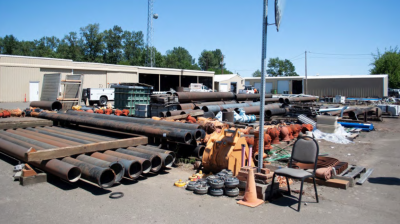Why Conduct a Facilities Needs Assessment?
Facility needs assessments are conducted to ensure the work spaces that the organization’s staff use to provide service to the community are sufficient in terms of work flow efficiency, asset protection, interdepartmental collaboration, equity, and safety. Just like any other infrastructure system that the City manages, the building portfolio should be reviewed periodically to ensure it is keeping pace with evolving community demands and values, now and well into the future.
It is important to take a portfolio-wide approach to analyzing facility space needs. A portfolio-wide analysis provides the opportunity to explore synergies and efficiencies among departments for service delivery and the sharing of resources and common spaces. This approach can also identify ways to improve the community’s experience when receiving City services or connecting with City staff. The last portfolio-wide assessment of the City of Corvallis facilities was completed over 70 years ago. The City has grown significantly since then, and work standards have changed considerably in the intervening decades. This new assessment allows us to review our current buildings in the context of a number of emerging factors, including:
- Climate Change – Over 25% of the City organization’s greenhouse gases are generated from the energy used to power and heat buildings. Older structures are inefficient in the use of energy. For example, windows and doors that are no longer airtight mean that heating and cooling systems need to work longer and harder to maintain adequate working environments. The City has a responsibility to look comprehensively at its facilities to determine if there are opportunities to increase efficiency, employ green building practices and reduce greenhouse gas emissions.
- Regulatory Changes - The Americans with Disabilities Act (ADA) was approved in 1990 and 31 years later, the City of Corvallis still has facilities that are not fully ADA compliant. Other regulatory changes that have occurred since the City’s facilities were designed include changes to building and fire codes, floodplain regulations, and employee safety, such as lactation rooms, and these need to be accommodated within the system
- Gender Equity - More than 50 years after the Women’s Rights movement began to open up employment opportunities for women, complete gender equity has not reached all of the City’s facilities. About 71% of the City’s facilities were built over 50 years ago and therefore were configured for a time when gender equity in employment was not always considered. This is particularly notable at some of the public safety and operations sites, where the building design assumed that some job classifications would be largely or completely accomplished by male employees, affecting key areas like locker rooms and restrooms. In addition, the City’s spaces do not have adequate and welcoming areas for community members and staff of all gender identities.
- Technology Changes – Organizations run on technology, and the City is no exception. Every City service area relies on data and interconnected technology to provide safety and service to the community. About 71% of the City’s facilities were constructed when office work was accomplished on typewriters. Over the years, these facilities were retrofitted to accommodate computer networks, instead of having those networks integrated in the building systems, posing a significant risk to the organization in an emergency.
- Security Changes - Unfortunately, due to the number of violent incidents targeting municipal facilities across the country, as well as the national security response following 9/11, public facilities must now consider facility security in their design. About 88% of the City’s facilities were designed before 9/11, and basic security features for the public and staff are lacking throughout the system.
- Increasing Demands for Service - The demands placed on municipal government grow over time with population increases and other pressures, and the organization also must grow to meet the increased service delivery needs of the larger population or the changes in service delivery required to comply with federal and state regulations. The Facilities Needs Assessment identifies many areas where City buildings already have reached or exceeded their capacity to house staff and equipment, which has impacts on effective operations.
Click here to go back to the Facilities Needs Assessment page.
